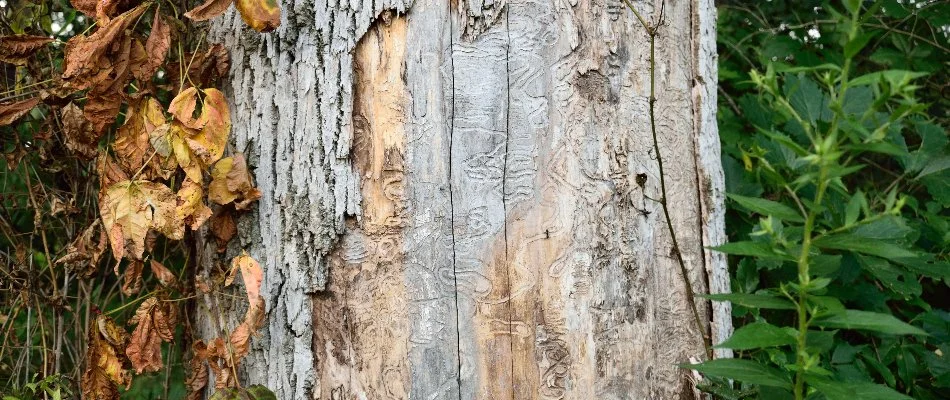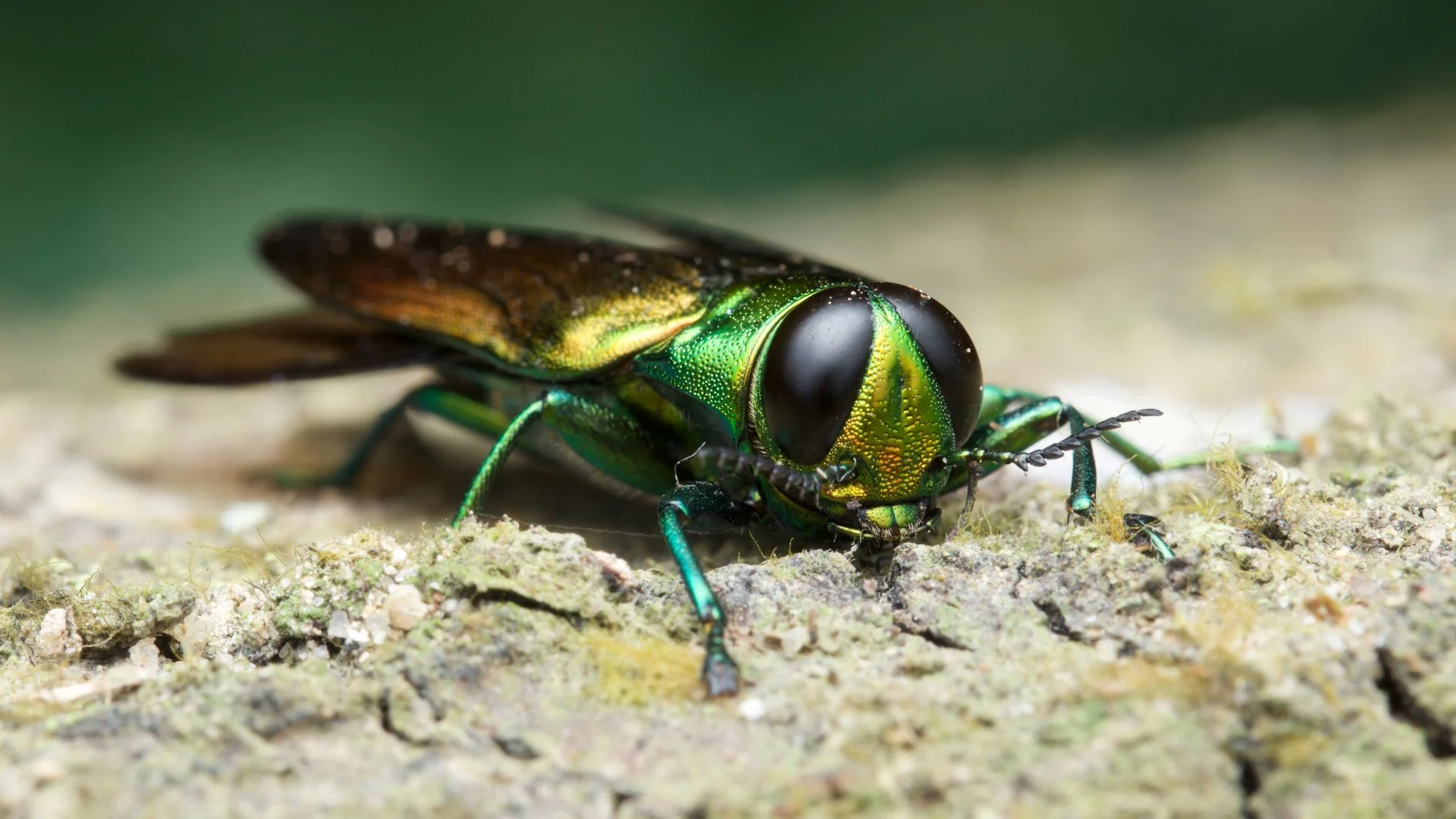Many residential and commercial property owners in South Dakota have incurred the wrath of pests known as emerald ash borers—often shortened to EAB. These little green beetles are highly destructive and can cause severe damage to ash trees. If you suspect an infestation on your property, it’s essential to schedule professional tree and shrub insect control treatments right away to combat the infestation effectively. Once the infestation is under control, you should schedule tree and shrub fertilization treatments to help your trees recover from any damage that they sustained.
What are emerald ash borers and what kind of damage can they cause?

Emerald ash borers are highly destructive insects that pose a significant threat to ash trees. These metallic green beetles, native to Asia, were first detected in North America in 2002. Since then, they have spread rapidly across many states. EAB larvae feed on the inner bark of ash trees, disrupting the flow of nutrients and water, which ultimately leads to the tree's decline and eventual death.
The damage caused by emerald ash borers is extensive. Infested ash trees may exhibit thinning or dying branches, loss of foliage, and canopy decline. As the infestation progresses, the bark may show "D"-shaped exit holes left by emerging adult beetles. In severe cases, the entire tree may succumb to the infestation. Not only can this affect the aesthetics and value of a property, but it can also pose a safety risk. An extensive EAB infestation can compromise a tree’s structural integrity, causing it to collapse and fall.
It’s estimated that, since their discovery in 2002, emerald ash borers (EAB) have destroyed millions of ash trees across North America.
What should you do if your ash trees have fallen victim to an EAB infestation?
If you suspect or confirm an emerald ash borer infestation in your ash trees, taking immediate action is crucial to mitigate the damage. Contacting a professional tree care company is highly recommended. They will conduct a thorough inspection to confirm the infestation and develop an appropriate treatment plan.
Insect control treatments specifically targeted at emerald ash borers are available. These treatments typically involve the application of insecticides that are effective against the larvae and adult beetles. Tree care professionals have the knowledge, expertise, and specialized equipment to administer these treatments safely and effectively, ensuring maximum protection for your ash trees.
After you’ve dealt with the infestation, scheduling tree and shrub fertilization treatments can help your trees recover.
Once the emerald ash borer infestation has been addressed, it is essential to focus on the recovery and health of your ash trees. Tree and shrub fertilization treatments can play a significant role in promoting their recovery and long-term vitality. Fertilization provides essential nutrients to the trees, strengthening their immune systems and helping them recover from the stress caused by the infestation. Regular fertilization treatments after an EAB infestation can support the growth and vigor of the ash trees, improving their resistance to future pests and diseases.
Call us to schedule our tree and shrub insect control service and get rid of those emerald ash borers!
If you own a residential or commercial property in Sioux City, IA, Sioux Falls, SD or a nearby area like Tea, Harrisburg, or Brandon, and you're dealing with an emerald ash borer infestation, we are the team to turn to! We offer a shrub and tree insect control service that includes treatments that provide protection against EABs, as well as other insects. If your property is in Iowa, you can call us at (712) 253-8024 to sign up for this service, while property owners in South Dakota can reach us at (605) 251-6880. Give us a call and let us provide the professional care your trees and shrubs deserve!




Comments (0)
Thanks for your comment!
Thanks for your feedback! Your comments have been successfully submitted! Please note, all comments require admin approval prior to display.
Error submitting comment!
There is a problem with your comment, please see below and try again.